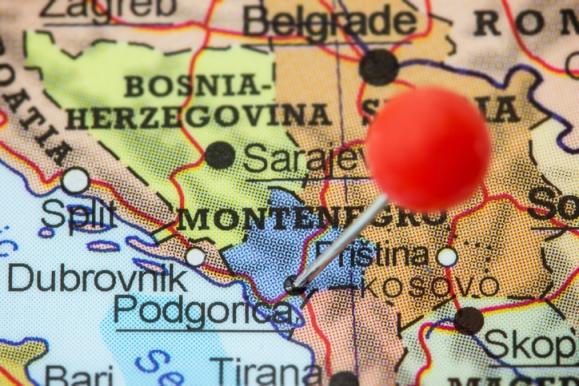European countries that have already confirmed the virus reported more outbreaks in poultry and wild waterfowl.
In related developments, France—already battling several H5N8 outbreaks—reported more events involving two low-pathogenic strains: H5N1 and H5N9. France experienced a similar situation last winter when three viruses (H5N9, H5N1, and H5N2) struck poultry, mainly in the southwest, the center of foie gras production.
Duck tests positive in Montenegro
Montenegro's state television yesterday reported that samples from a dead duck found on Lake Skadar in the eastern part of the country were positive for H5N8, Reuters reported. More than a dozen European countries have now reported the virus, which has also turned up in the Middle East, Africa, India, and South Korea.
The country's food safety agency said the virus isn't a threat to humans but urged farmers to keep poultry flocks indoors and take biosafety precautions. The country has already banned poultry imports from countries hit by H5N8 outbreaks.
Neighboring Croatia and Serbia had reported earlier H5N8 detections in waterfowl.
France, Switzerland, Romania report more H5N8
France today reported three more H5N8 outbreaks on duck farms in Gers department in the southwestern part of the country, according to a report to the World Organization for Animal Health (OIE). The virus was found at two of the locations as part of surveillance activities and at one of the sites, samples were taken after the birds got sick and died. One of the sites has epidemiologic links to an earlier outbreak location.
The outbreaks began on Dec 16 and Dec 19. The three farms together housed 9,044 ducks, and culling operations are planned.
Elsewhere, Romania and Switzerland announced more H5N8 detections in waterfowl, according to separate reports to the OIE. Romanian veterinary officials today said tests on two greylag geese found dead on Suhaia Lake, located in the far southern part of the country near the Bulgarian border, were positive for the virus. Yesterday officials reported another detection in a whooper swan found in Constanta in southeastern Romania.
Swiss veterinary officials today said tests on a black-headed gull found near Lake Zurich yielded H5N8. The country has found H5N8 several times in wild birds since the middle of November.
Low-path outbreaks in France
In other avian flu developments, France's agriculture ministry today reported more outbreaks from two low-pathogenic subtypes: H5N1 and H5N9.
The latest H5N1 outbreaks occurred at two duck farms and one chicken farm in Gers department, according to a report today to the OIE. The virus was found during surveillance or as part of an investigation into another outbreak. The report didn't say how many birds were housed on the farms, but it said stamping out was one of the control measures.
Meanwhile, authorities reported H5N9 on three more duck farms, two in Gers and one in Hautes-Pyrenees department. The virus was found during stepped-up sampling or as part of the investigation into other outbreaks.
The report said that all 1,845 susceptible birds will be destroyed to curb the spread of the virus.
See also:
Dec 20 Reuters story
Dec 20 OIE report on H5N8 in France
Dec 21 OIE report on H5N8 in Romania (geese)
Dec 20 OIE report on H5N8 in Romania (whooper swan)
Dec 21 OIE report on H5N8 in Switzerland
Dec 21 OIE report on low-path H5N1 in France
Dec 21 OIE report on low-path H5N9 in France






















